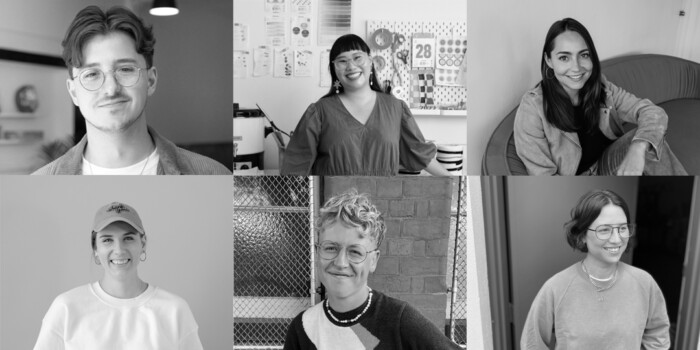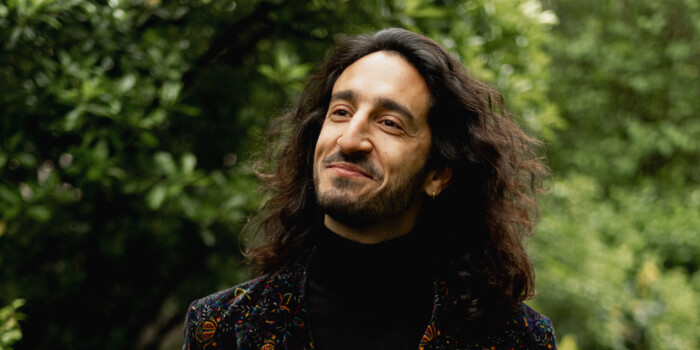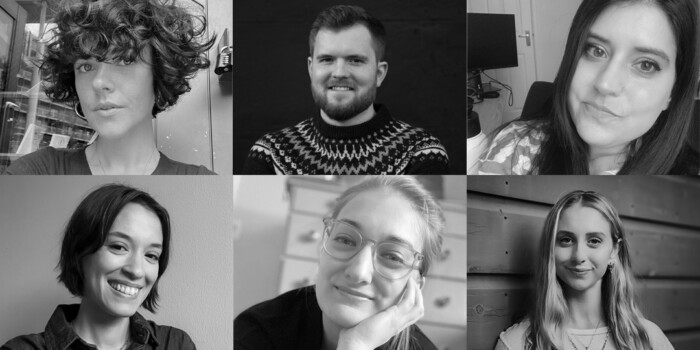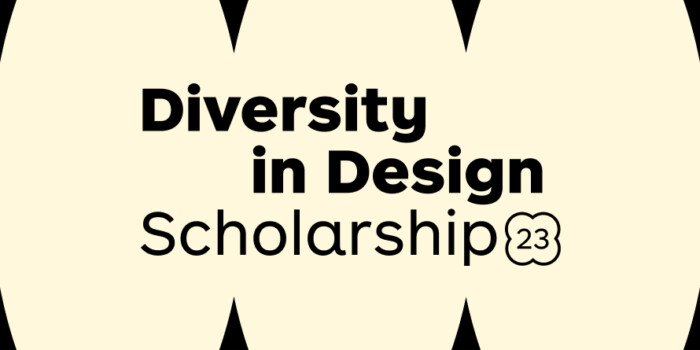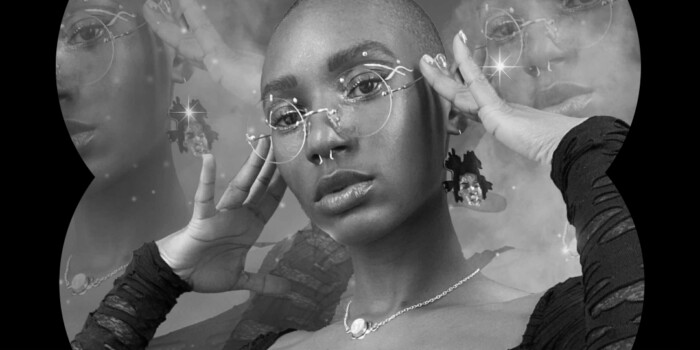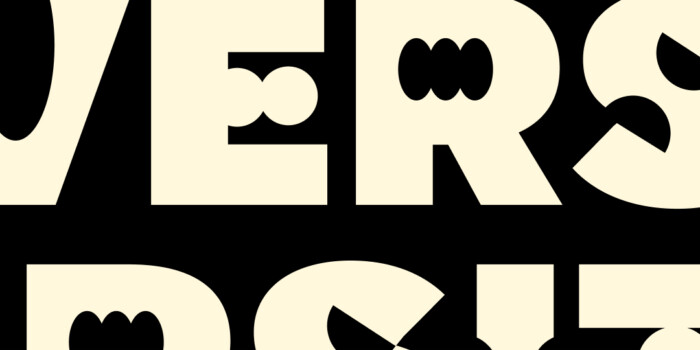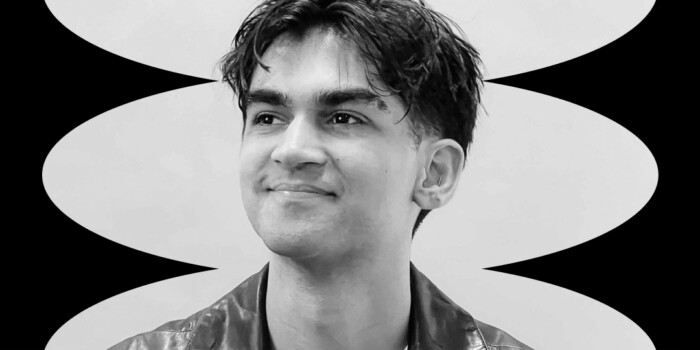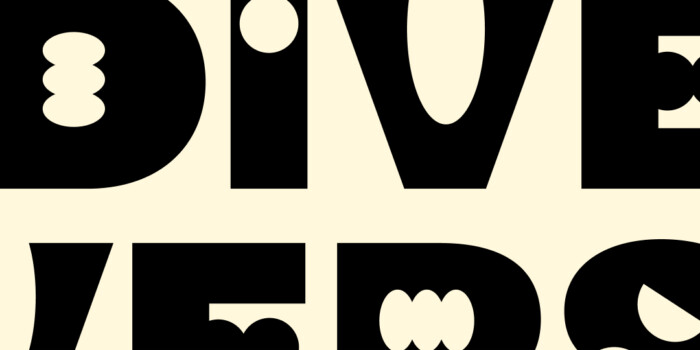Study Design Abroad: Laura Welch, Portland to Shillington London

After a communications degree and 10 years in different jobs in the creative industry, Shillington London graduate Laura Welch knew she hadn’t yet hit her stride. A trip to London from her native Oregon and an Info Session at our campus there changed all that. She moved to the city, enrolled in our full-time course and was a graphic designer three short months later! In 2019 after a placement and some freelancing, she landed a job at USA’s largest independent film festival: Sundance—to work on the large scale environmental design that could be seen all over the festival. She loved it so much, she went back to Utah again in 2020.
We caught up with Laura to talk about her work with Sundance, what it was like studying abroad in London and what it’s like to be freelancing during the Coronavirus crisis.
Back in 2017 you moved to London to study at Shillington. Why Shillington? What made our course stand out?
In my early 30’s I felt very frustrated in my career. I had studied communications for my undergrad but after working professionally in the creative industry for 10 years I hadn’t ended up where I wanted job-wise. I knew if I was going to shift focus I would have to go back to school and specialize in something, but I didn’t feel like I had the luxury of time. I couldn’t afford to take 2-4 years off to get another degree. I always wanted to spend time in Europe so I decided I might as well go abroad if I was making a big life change. After looking over tons of design programs— from fashion to architecture—and visiting many cities I’d always fantasized about moving to, I realized that graphic design was really the one thing that translated into all those worlds. My prior work history taught me that on-the-job experience is almost always more valuable than theoretical experience so I wanted a program that ran like a true studio. Somewhere that taught me a skill, helped me practice it and, in the end, provided me with a real portfolio that would help me land jobs.
The portfolios I saw coming out of Shillington were by far the most impressive and once I had the chance to visit the London campus and attend an Info Session I was sold.

You’re originally from Portland, Oregon. What made you decide to move to London?
London has always been one of my favorite places in the world so it was really a no brainer for me. I hope to live there permanently one day so going to school there seemed like a good start.
What did you make of London? Would you recommend it to other students who are looking to study abroad?
One million percent yes!
London is hands down the best.
It’s inspiring, the museums are free and they have the best accents! What’s not to love?
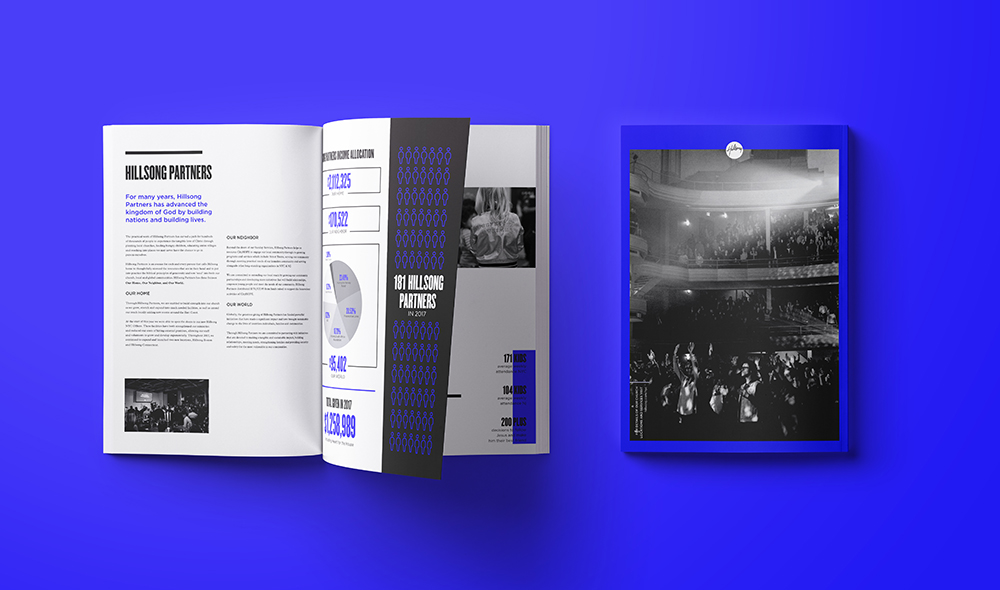
And, what did you make of the course? You were working as a Art Director beforehand, how did it build your skill set?
The course was everything I hoped it would be. It is extremely practical, it’s constantly evolving based on what the real-time design needs within the industry are and it’s taught in such a safe, fun and challenging environment.
It truly gives you the experience of working in a studio, the pressure, the deadlines, the creative energy. I can’t say enough good things about it.
I was an art director at a photography studio previously so it’s a very different type of work. The course built my skill set by drilling into me the tenants of design thinking, helping me to truly build meaning into what I create and teaching me that you have to be willing to put your ideas out there without fear of rejection. Nothing is ever perfect and feedback helps things grow. This is honestly one of the most useful traits I found when it came to transitioning into the ‘real world’ after Shillington.
Did you make any connections during the course? Do you still talk to your classmates from London or elsewhere?
Yes I made loads of connections. I’m actually currently working with a former classmate on re-branding his company and we are both really enjoying working with each other again since we were trained the same way! We also still have an all-class WhatsApp thread that we communicate on from time to time whether that’s just design questions or events etc… We came from a lot of different places so it’s cool knowing people now spread all over the world and having connections in different areas.

What have you been up to since you graduated? How has your life changed after Shillington?
I’ve been doing a whole lot haha. I moved to New York after graduating for a creative placement at J. Walter Thompson, ended up spending a year in the city freelancing at various agencies after that and then working a short stint with AT&T/DirecTV on brand side creative. Through sheer coincidence, I was pitching in on AT&T’s activation space at the Sundance Film Festival when I got the opportunity to move to Utah and work as an environmental graphic designer for the Film Festival itself. One of my dreams while at Shillington was to work on large scale festival branding and this was an opportunity I couldn’t refuse. It was truly a life changing experience so once the 2019 festival wrapped, I came back to Atlanta for 7 months, working a couple contracts and then headed back to Utah to do it all over again for the 2020 festival! I have a little bit of a crazy life, but I love the changes and variety that being a designer allows! It’s one of the main reasons I went back to school in the first place.
So, I guess you could say my life has changed dramatically in all the best ways possible.
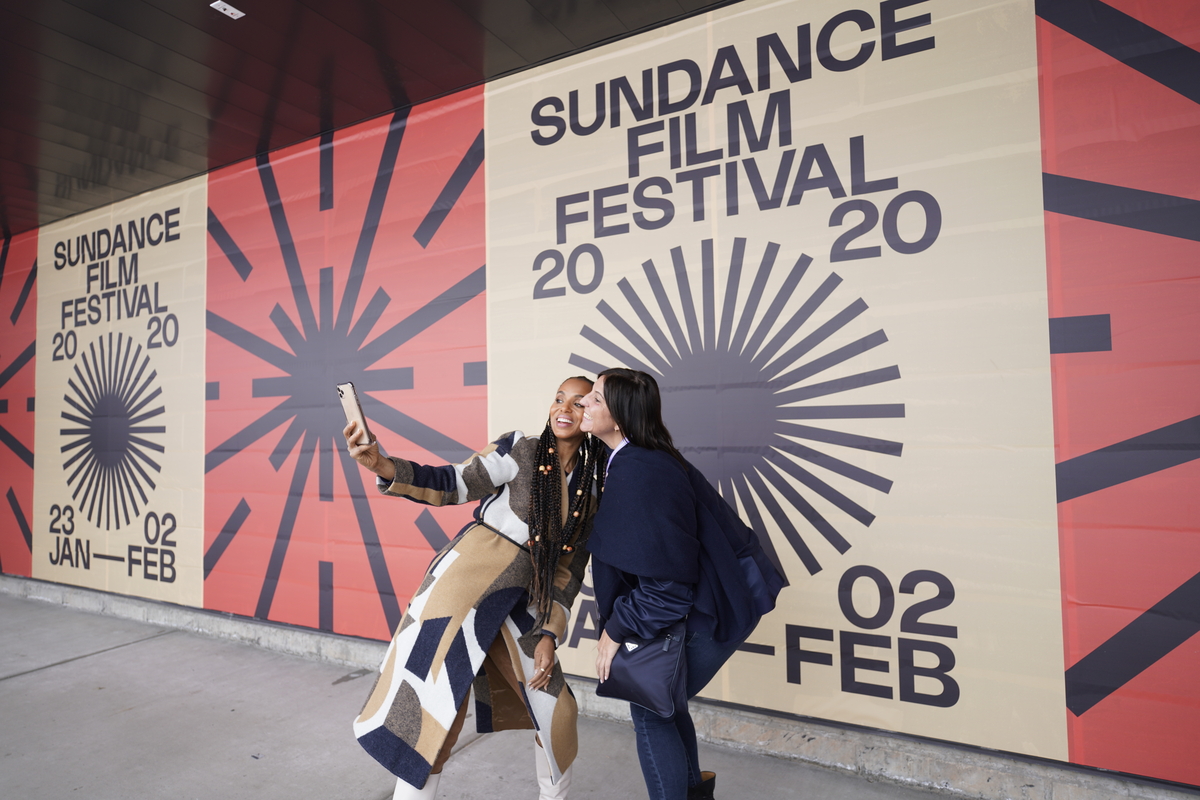
You’ve been working as Environmental Graphic Designer at the Sundance Institute who, amongst other things, organise the famous Sundance Film Festival. Can you tell us a little about your role there?
Because the Festival is seasonal, there is a small design team hired each year to execute on the visual identity across their four key design areas: environmental, publications, signage and creative services. This year I worked my second season as an environmental graphic designer which means between myself and one other designer, we created all the large scale graphics for the Film Festival, everything from banners that line the city streets to giant building wraps. It’s only a three month position so you can imagine that the volume of work is insanely high. Shillington definitely prepared me for that. It was basically like portfolio time for three months straight. But our Creative Director, Luis Farfan, is incredibly supportive and helpful so even when things were stressful he made them fun. Plus the other design teams, and everyone at Sundance really, is so delightful to work with which is a huge part of the reason I decided to come back and work the festival for a second season.
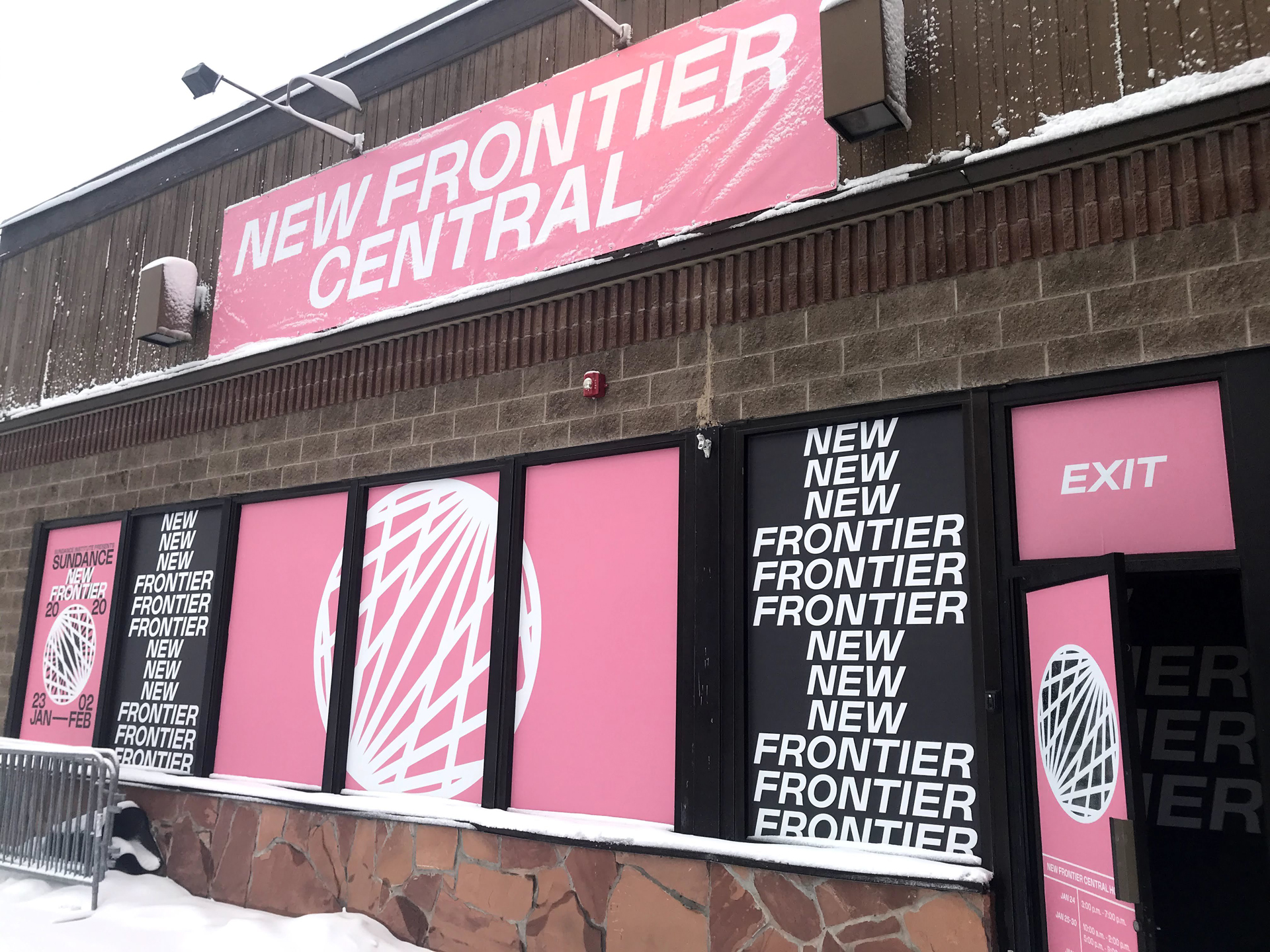
We absolutely loved Sundance 2020’s visual identity. Can you tell us about that project? And how you transformed it into a tangible experience for the festival?
Because of the timing of the festival the identity begins development in the spring of the previous year. The 2020 festival identity was created by a London studio called Studio Lowrie (shoutout). They are amazing and working with our Creative Director, they built out a very robust brand guideline for our design team (there’s a great feature over at It’s Nice That on their process for the festival). But, taking a brand identity and bringing it to life across different mediums always presents its own unique challenges. You want everything to feel considered and intentional, not plug and play. This year’s identity really centred around the interaction between the projector, the eye and the sun—how we perceive images essentially. You don’t want to lose sight of the meaning in the midst of a huge scope, so the first couple weeks there is a lot of back and forth presenting design mockups to the Creative Director to make sure all the teams are going in the same direction.
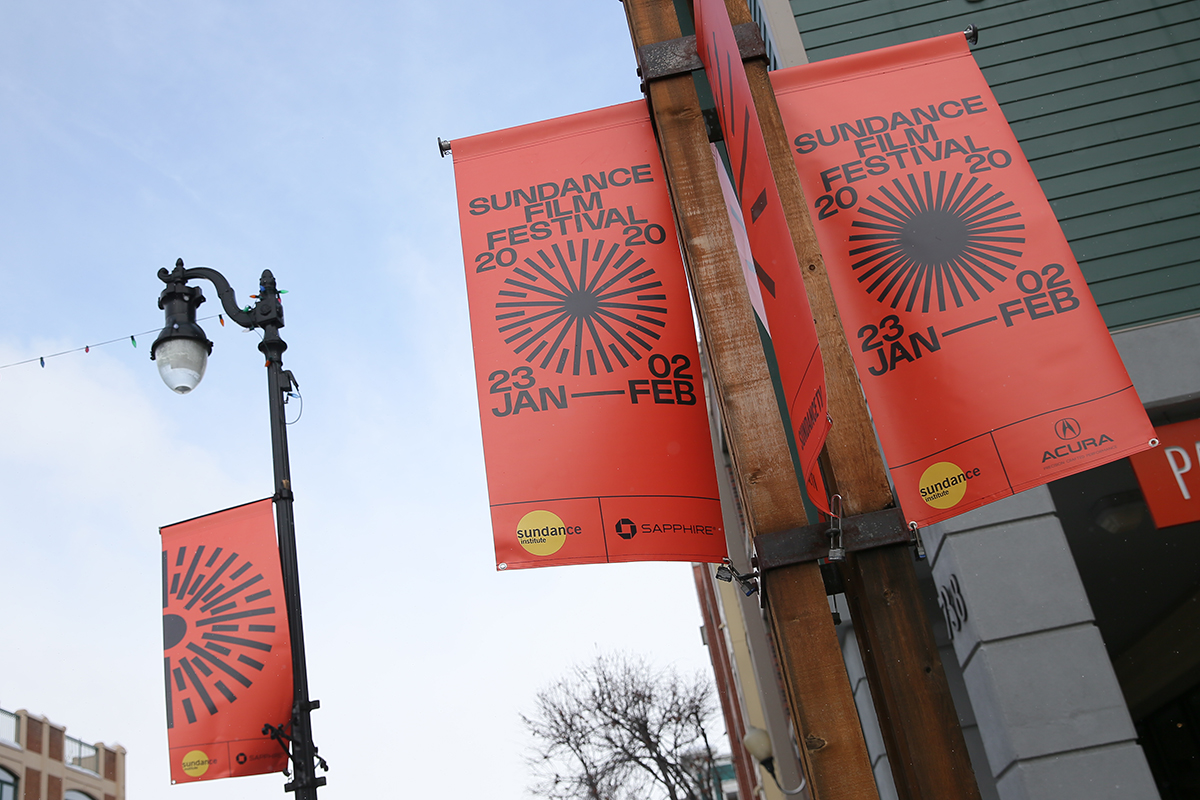
When you’re creating large-scale building graphics, each venue has its own set of unique challenges and opportunities. Doing walk-throughs is really important to get a sense of scale and identifying anything that might present a challenge whether that’s an uneven surface on a wall or a section of building that goes from cinderblock to wood, a door you didn’t know was there or even something small like electrical outlets or light fixtures. Also creating mockups as you design so you can understand how all the pieces are going to come together is essential. Having accurate measurements is of paramount importance. There are a lot of details to keep in mind that might initially seem overwhelming, but like everything it becomes more intuitive the more you do it. My first year at the festival I had zero practical experience with any of this. I was meant to have a senior designer supervising me, but unfortunately he had to back out after only one day and I was left for a while to figure things out as I went. But the beauty of Shillington was that, even though it was intimidating, I had great confidence that I could actually figure it out because we had taken on so many challenges during the course.
Once our design work receives final approval, we have the fun task of prepping our files for print, which is its own exciting challenge (lots of math and lots of artboards), but like any new design endeavor, you just kind of figure it out haha…
Environmental design, in my opinion, is the most fun job of the festival because at the end of the day people are actually getting immersed in your work as they experience the festival and seeing them find joy in that is 100% the most special experience I’ve had in my entire career.

What other projects have you been working on? Can you share some other stuff you’ve been working on?
The great thing is, post-Sundance I was interviewing with what were literally my top four companies back in Atlanta, working a “trial to hire” contract with one and then whomp whomp the Coronavirus came along and made us all question our existence. BUT—it’s not a sob story. So many industries are in a way worse position than us and I am actually more grateful to be a designer now than I ever have been because we really can create work for ourselves—it might just require putting on a different hat. I’ve solely worked in-house for agencies, but there is huge opportunity to work independently with companies that still need services during this time.
This situation is finally forcing me to figure out how I would set up my own business, price/bid for work and start seeking new territory as a designer.
It’s definitely out of my comfort zone, but I know in the long run I’m going to be very grateful to have finally sorted that piece out.
Secondly, I’m finally getting to spend time doing a few online classes that I’m really excited about (all free by the way). Growing our skillset and keeping up in a competitive field is something we should always do, but right now I have ample time to really engage in learning so I’m taking full advantage of that. Plus, I have loads of personal projects I’ve started but not finished so going back into the archives picking some that I really loved and getting back to the art of finishing a self-brief, which honestly is what has (in my opinion) gotten me most of the jobs I’ve loved.
I hope that any other Shillumni out there experiencing a similar struggle in this strange time can be encouraged and know that we are trained for this, and that when (not if) we get through this, we actually have the option to come out with better prospects so long as we stay engaged in creating and let our work bring us some joy in the process.
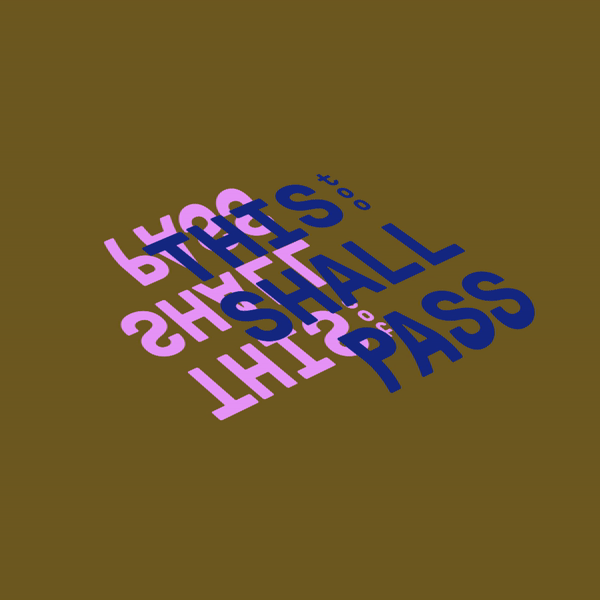
You’ve moved around a lot during your career, London and Portland of course, but also New York, Atlanta and Salt Lake City for your Sundance work. Have the places you’ve lived inspired the way you work or the work you produce?
I think all experiences have the possibility to inspire the work we produce. I wouldn’t say I’ve been inspired so much by specific places I’ve lived as the people and work I’ve encountered in those places. I’m constantly taking pictures of things that inspire me, so my camera roll has thousands of images from around the world that work to spark creativity in different moments. To me the greatest benefit of moving and experiencing different environments and people is that you can really find your fit. I’m much more comfortable now turning down work because I’ve come to learn what type of work-environments I am best suited for and what types kill my soul haha. Environment and culture should never be taken for granted. This is our livelihood and it should bring us joy everyday! Plus I’ve found it is much harder to produce great work when you are not in sync with the place or people you’re creating with.
What else inspires your work?
I can find inspiration most anywhere but really Instagram helps spark new ideas in me most often. I finally started a dedicated design page and have been adding tons of design specific accounts to follow. When I see something I like I always save it and when I get enough inspiration in a certain direction I set myself a brief and create something inspired by that style.
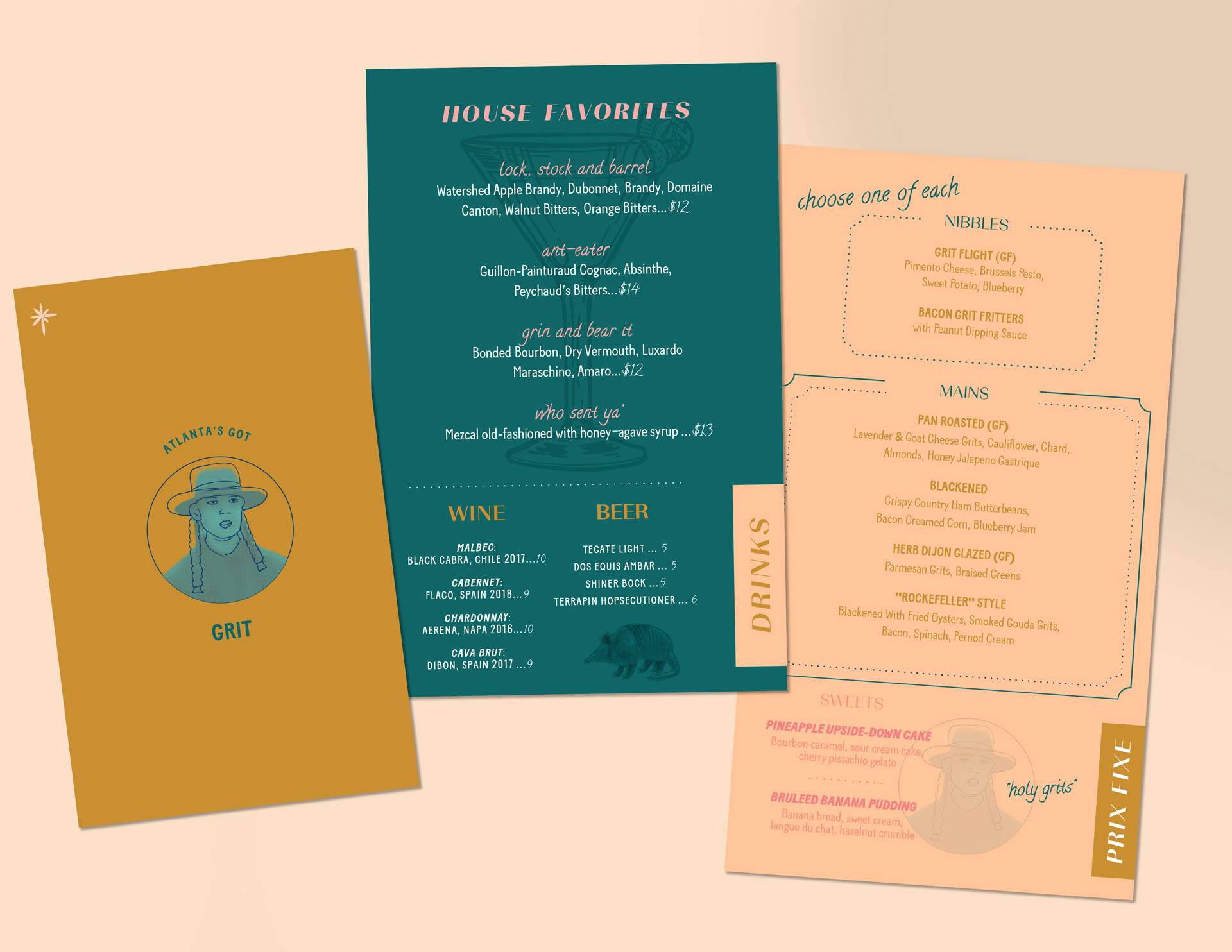
Can you share some advice for our current Shillington students? Or someone who has just graduated?
If you’re studying currently or just out, don’t constantly compare yourself to the designers around you.
It’s so easy these days to see other people’s work on social media or elsewhere and feel like you’ll never get to where they are, but instead of letting this frustrate you, let it inspire you.
We each have a unique perspective and talent that no one else has, and once you realize that it’s easier to just create in your own voice. Honestly, I was maybe mid to bottom of my class at Shillington, but while design is somewhat about natural talent, it’s also about hard work, just like anything else. If you’re passionate about making things, keep making them. If you want to land a job doing restaurant design, then make up some restaurants and brand them. If you are a passionate digital designer then find a friend or business who needs help and make something for them. When I realized I wanted to get into environmental design, I spent six weeks creating new projects for myself and building out projects I’d already had in my portfolio to show people I could actually do it! And guess what? It paid off! I got hired by Sundance a few weeks after I posted all the work to my website. Don’t wait to get paid to do something you want to do.
Carve out time to do it and eventually people will start paying you for it.
People value passion and dedication and I promise you just keep going and it will pay off!
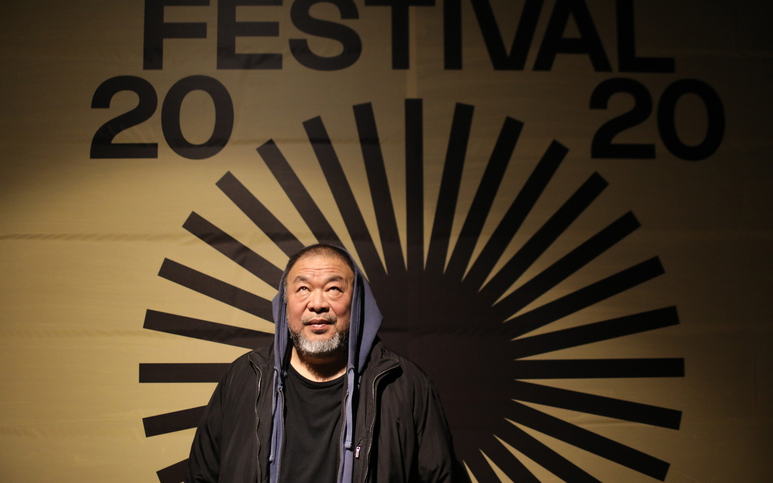
Huge thanks to Laura for sharing her story and her excellent advice. Check out more of her work on her website and keep up to date with any of her new projects on Instagram.
Want to study graphic design at Shillington? Learn more about our 3 month full-time and 9 month part-time course in New York, London, Manchester, Sydney, Melbourne or Brisbane.
Want to win some amazing prizes and stay in the loop with all things Shillington? Sign up to our newsletter to automatically go in the draw.
